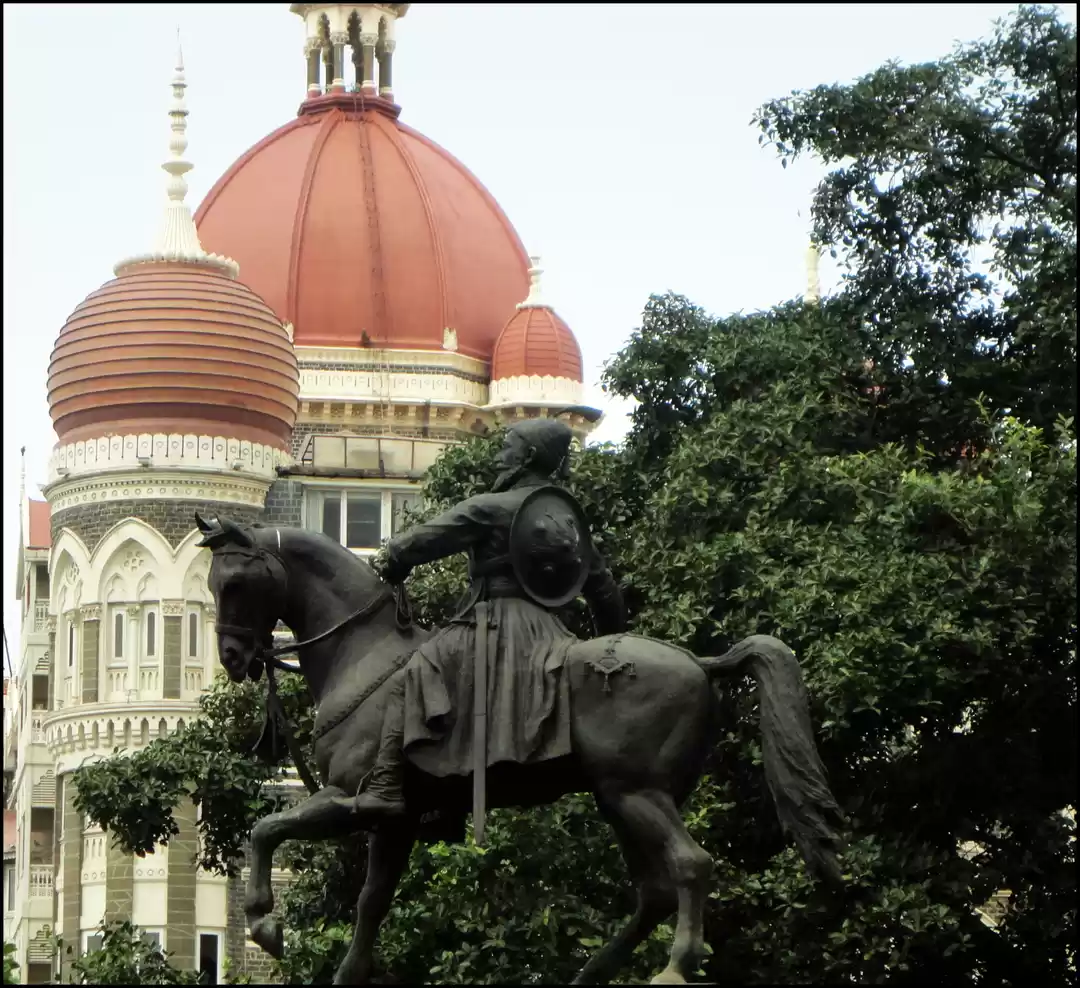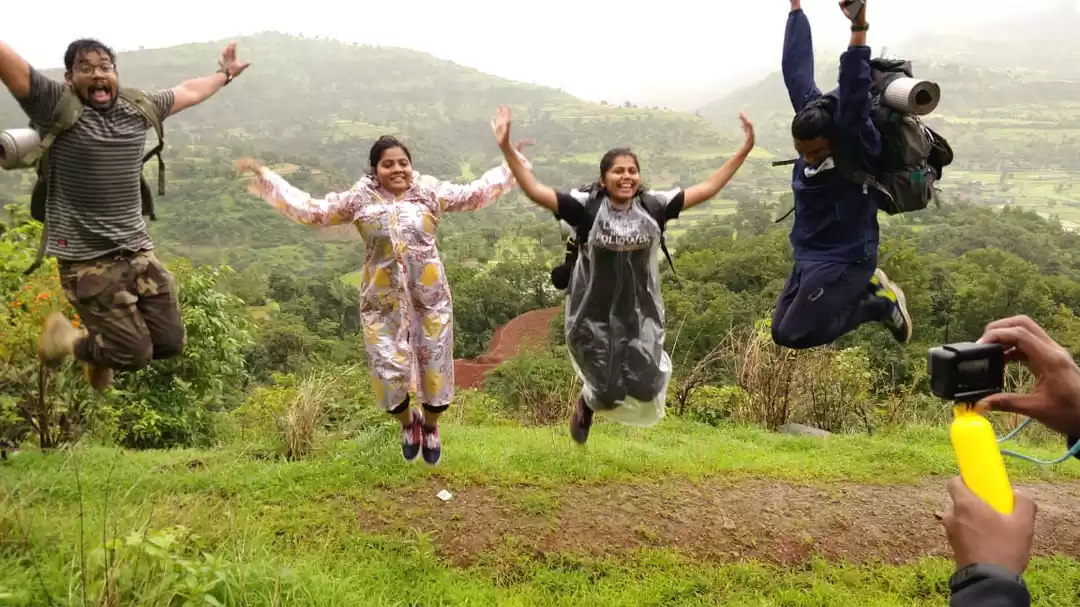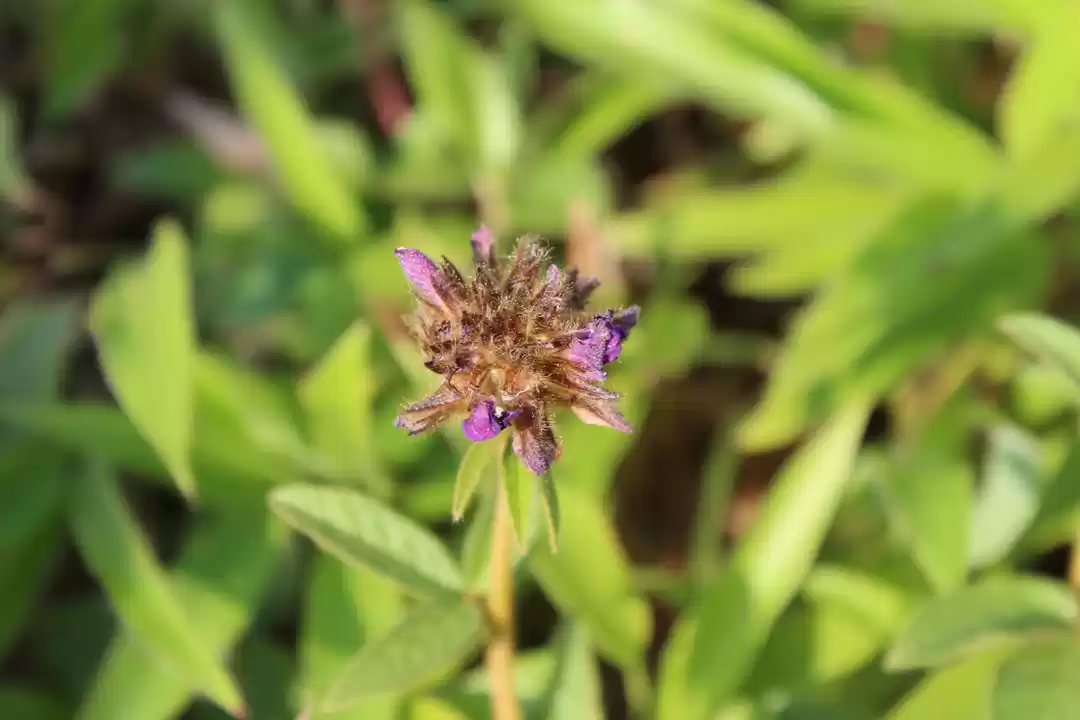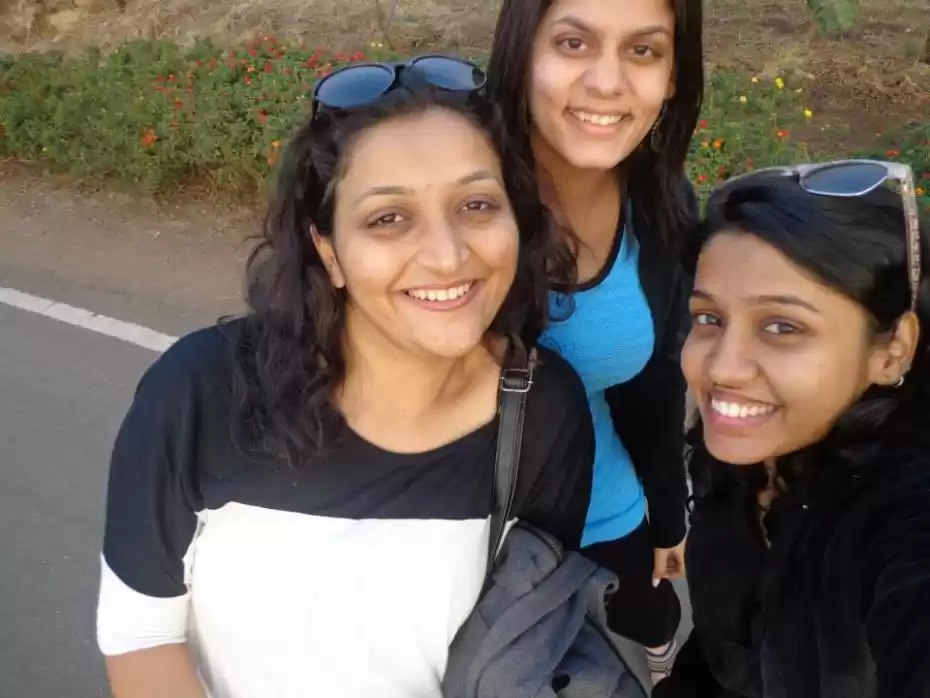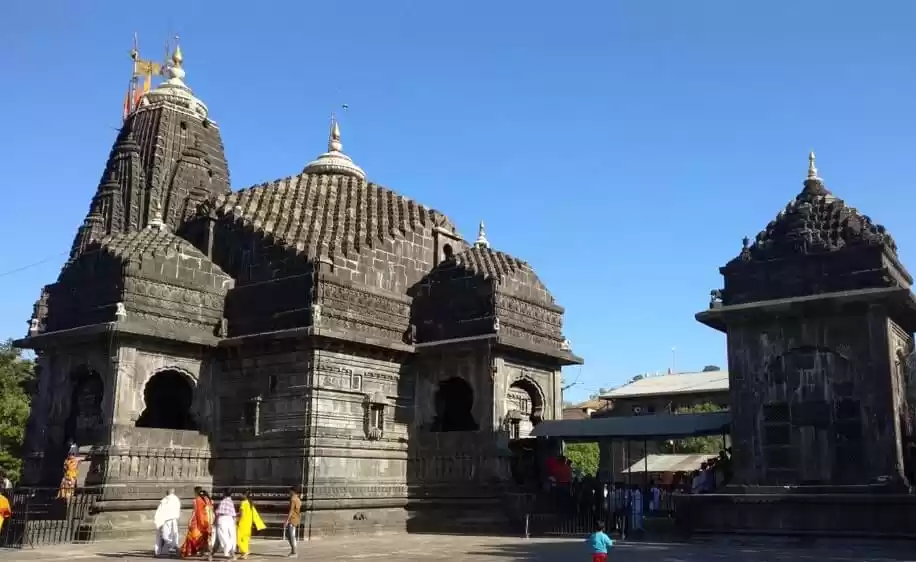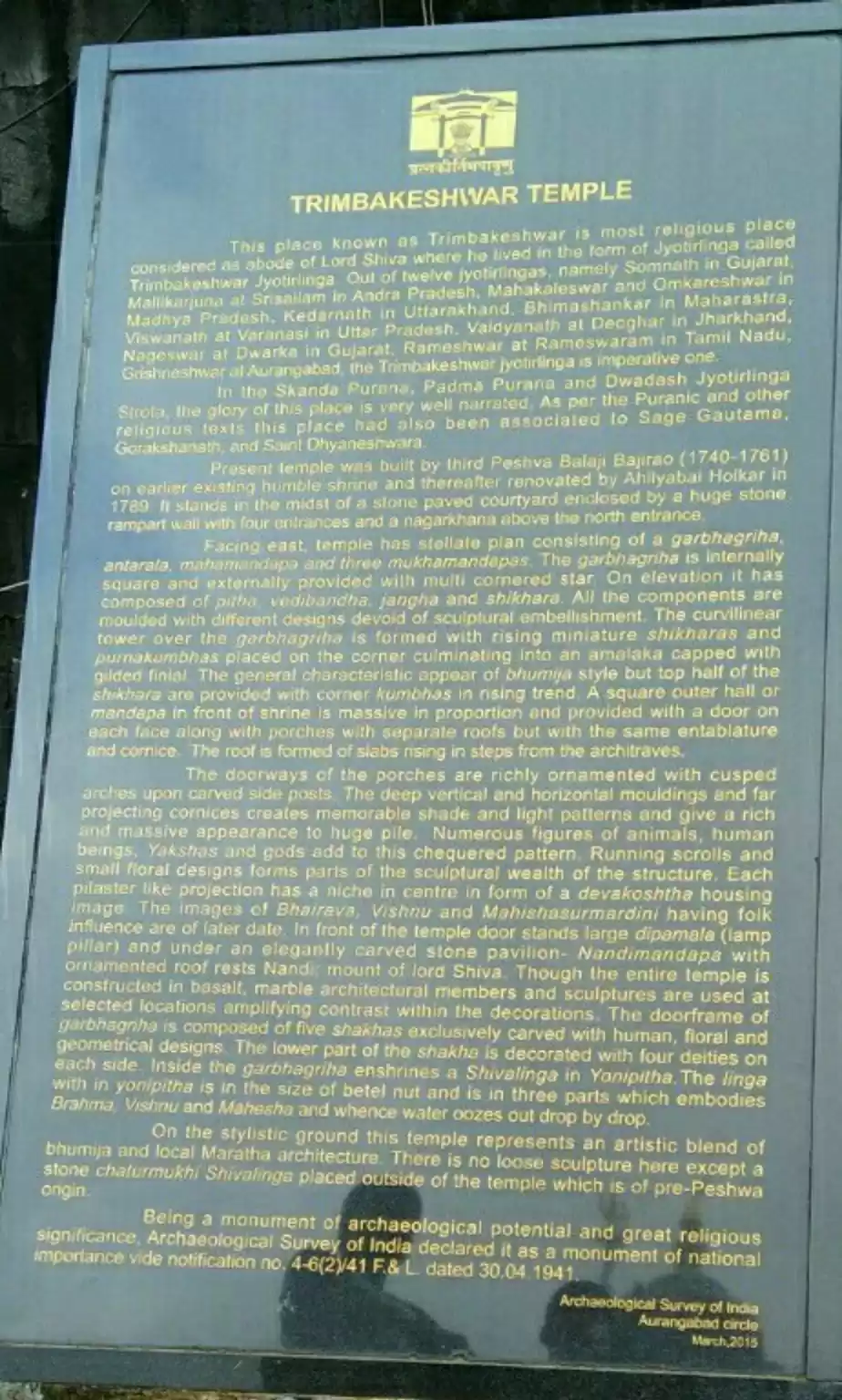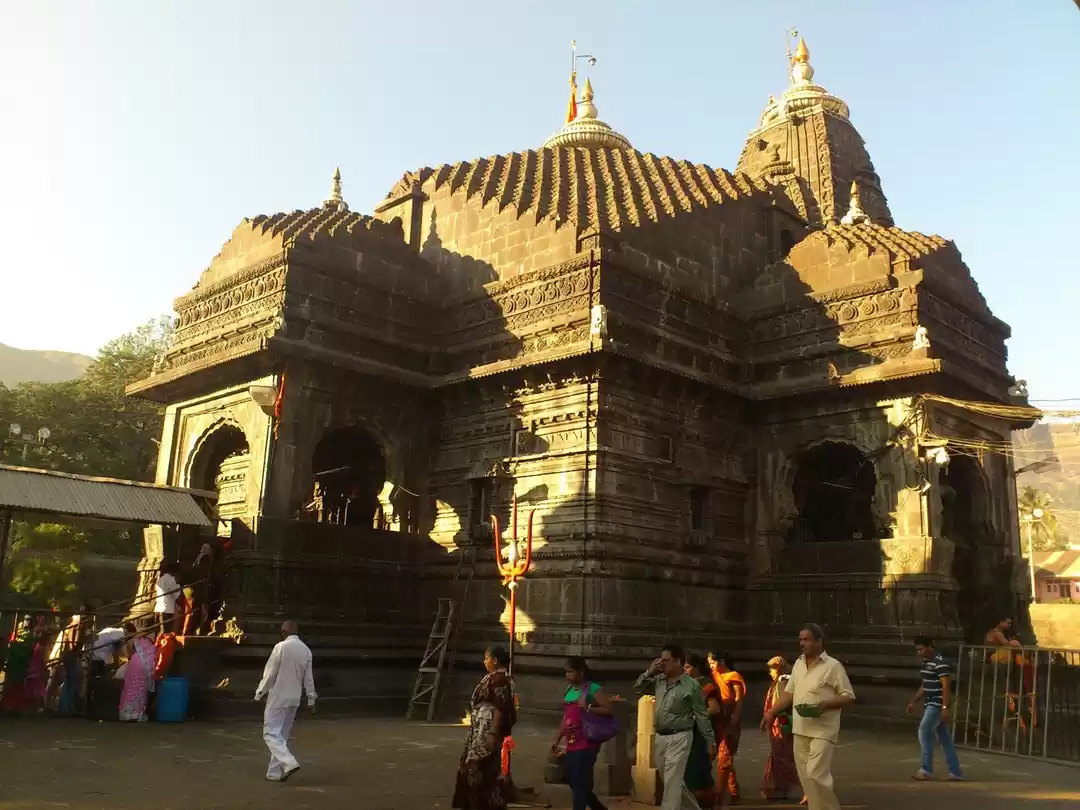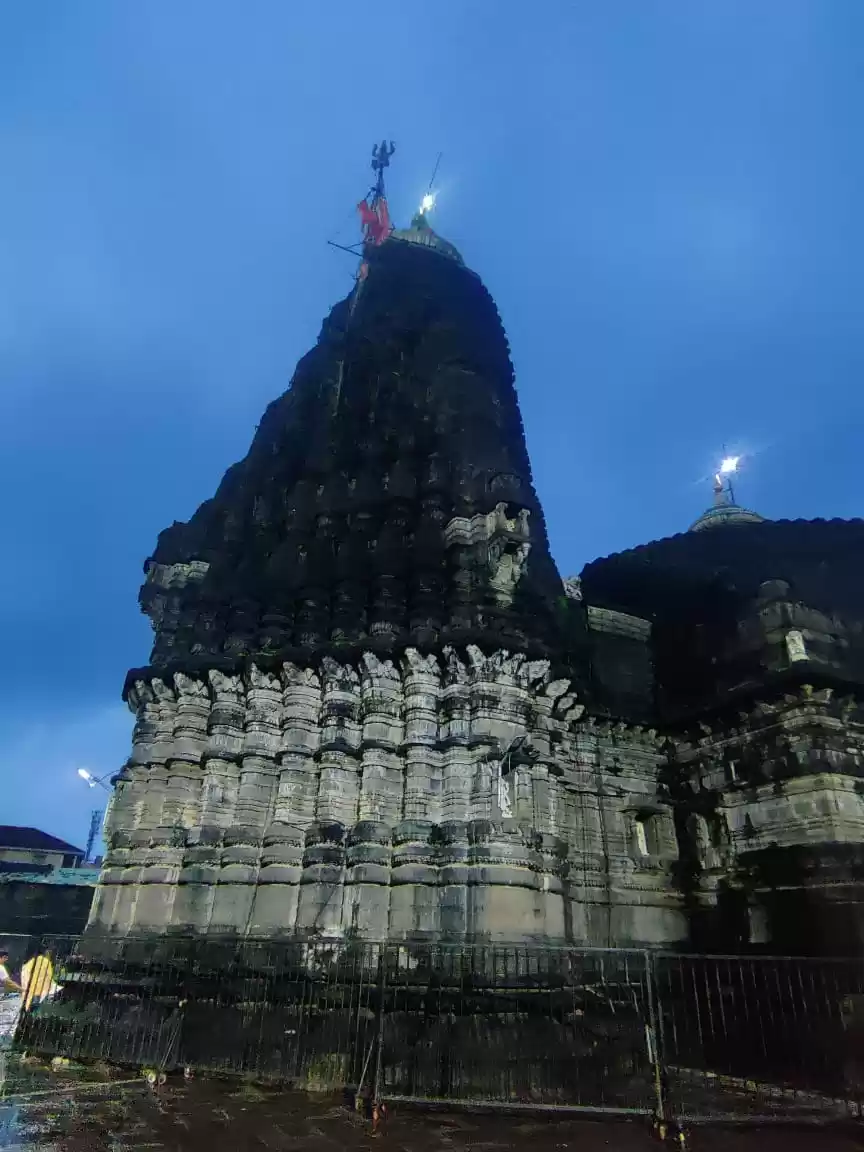Are you looking for a spiritual getaway that will fill your soul with peace and bliss? Do you want to visit one of the most sacred and ancient temples in India and witness its divine glory? If yes, then you should definitely plan a trip to Trimbakeshwar Temple, the abode of Lord Shiva and one of the 12 jyotirlingas in India.
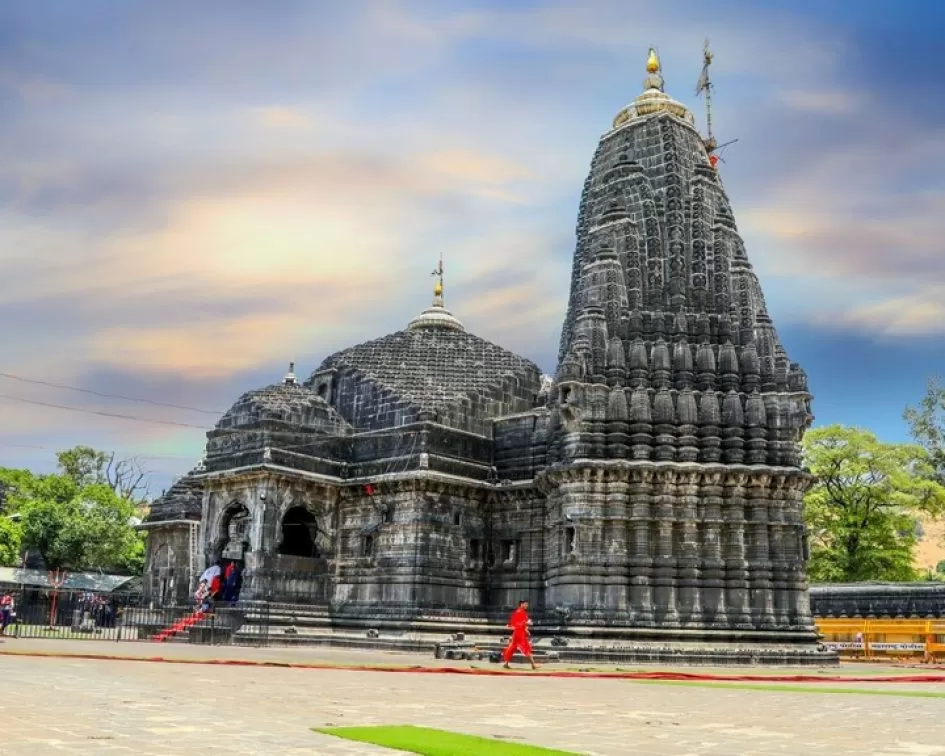
Trimbakeshwar Temple is located in the town of Trimbak, near Nashik, in Maharashtra. It is one of the most revered and visited temples in India, attracting millions of devotees every year. The temple is famous for its unique jyotirlinga, which has three faces representing Lord Brahma, Lord Vishnu, and Lord Shiva. The temple is also the source of the Godavari river, the longest river in peninsular India.
Trimbakeshwar Temple has a rich history and mythology associated with it. It is believed that the temple was built by Rishi Gautam, who was blessed by Lord Shiva for his penance. The temple also witnessed many important events in Hindu mythology, such as the appearance of Lord Vishnu as Trivikrama, the creation of the Godavari river by Lord Brahma, and the origin of the Kumbh Mela.
Trimbakeshwar Temple offers many pujas and services for the devotees who wish to seek the blessings of Lord Shiva. Some of the most popular pujas are Narayan Nagbali Puja, Kaal Sarp Dosh Puja, Tripindi Shradh Puja, Rudra Abhishek, Kumbh Vivah, and Mahamrityunjay Mantra Jaap. These pujas are performed by authorized panditji of the temple, who can be booked online through various portals.
In this article, we will guide you through everything you need to know about Trimbakeshwar Temple, from how to reach there to what to see and do there. We will also tell you the story and legends behind this sacred place and some interesting facts and trivia about it. By the end of this article, you will be ready to plan your trip to Trimbakeshwar Temple and experience its divine grace.
Also Read: All You Need To Know About The Shirdi-Nashik-Trimbakeshwar-Vani Circuit
How to Reach Trimbakeshwar Temple
Trimbakeshwar Temple is easily accessible by different modes of transport from various parts of India. Here are some of the ways you can reach there:
By air: The nearest airport to Trimbakeshwar Temple is Nashik Airport, which is about 30 km away. You can take a cab or a bus from there to reach the temple.
By rail: The nearest railway station to Trimbakeshwar Temple is Nashik Road Railway Station, which is about 40 km away. You can take a cab or a bus from there to reach the temple.
By road: Trimbakeshwar Temple is well-connected by road from major cities like Mumbai, Pune, Aurangabad, etc. You can take a state or private bus or drive your own vehicle to reach there.
The best time to visit Trimbakeshwar Temple is between October and March, when the weather is pleasant and conducive for sightseeing. The temple remains open from 5:30 am to 9:00 pm every day. However, during festivals like Mahashivaratri, Shravan Maas, Kumbh Mela, etc., the temple witnesses huge crowds and long queues. So plan your visit accordingly.
What to See and Do at Trimbakeshwar Temple
Trimbakeshwar Temple is a treasure trove of spiritual and cultural attractions that will mesmerize you with their beauty and significance. Here are some of the things you should see and do at Trimbakeshwar Temple:
See the jyotirlinga: The main attraction of Trimbakeshwar Temple is the jyotirlinga, which is one of the 12 jyotirlingas in India. The jyotirlinga is unique because it has three faces representing Lord Brahma, Lord Vishnu, and Lord Shiva. The jyotirlinga is covered with a silver crown adorned with precious stones and jewels. The crown is displayed only on Mondays and during special occasions.
See the kund: Another attraction of Trimbakeshwar Temple is the kund or the water tank that surrounds the temple. The kund is believed to be the source of the Godavari river, which flows from the Brahmagiri mountain behind the temple. The kund is also considered to be sacred and has healing properties. Devotees take a dip in the kund before entering the temple.
See the idols: Trimbakeshwar Temple also houses many idols of various deities, such as Lord Ganesha, Lord Hanuman, Goddess Parvati, Goddess Annapurna, etc. These idols are made of stone, metal, or wood and are worshipped by the devotees. Some of the idols are also believed to have miraculous powers and grant wishes to the devotees.
See the architecture: Trimbakeshwar Temple is also a marvel of architecture and craftsmanship. The temple is built in the Nagara style of architecture, which is characterized by a tall tower or shikhara over the sanctum. The temple also has intricate carvings and sculptures depicting scenes from Hindu mythology and scriptures. The temple also has a spacious courtyard and a hall with pillars and arches.
Perform pujas and services: Trimbakeshwar Temple offers many pujas and services for the devotees who wish to seek the blessings of Lord Shiva. Some of the most popular pujas are Narayan Nagbali Puja, Kaal Sarp Dosh Puja, Tripindi Shradh Puja, Rudra Abhishek, Kumbh Vivah, and Mahamrityunjay Mantra Jaap. These pujas are performed by authorized panditji of the temple, who can be booked online through various portals. These pujas are believed to provide relief from various problems and doshas in one’s life and bring prosperity and happiness.
Book online pujas and services: If you want to book online pujas and services at Trimbakeshwar Temple, you can do so through various portals that offer these services. Some of the portals are [Trimbakeshwar Trust], [Trimbakeshwar Online], [Trimbakeshwar Purohit Sangh], etc. These portals provide information on how to book online pujas and services, such as live darshan, puja booking, donation, panditji booking, etc. They also provide guidance on how to perform these pujas and services and what are the benefits and blessings of doing so.
You May Love: 7 Richest Temples In India And Their History
The Story and Legends of Trimbakeshwar Temple
Trimbakeshwar Temple has a rich history and mythology associated with it. It is believed that the temple was built by Rishi Gautam, who was blessed by Lord Shiva for his penance. The temple also witnessed many important events in Hindu mythology, such as the appearance of Lord Vishnu as Trivikrama, the creation of the Godavari river by Lord Brahma, and the origin of the Kumbh Mela. Here are some of the stories and legends behind Trimbakeshwar Temple:
The story of Rishi Gautam: According to legend, Rishi Gautam was a sage who lived with his wife Ahalya in a hermitage near Trimbak. He was a devotee of Lord Shiva and performed rigorous penance to please him. One day, he accidentally killed a cow while collecting firewood. The cow was actually sent by Indra, the king of gods, who was jealous of Gautam’s virtue and wanted to seduce Ahalya. As a result of killing the cow, Gautam incurred a sin called Gohatya or cow-killing, which is considered to be a grave offense in Hinduism. To atone for his sin, Gautam prayed to Lord Shiva and requested him to cleanse him of his sin. Lord Shiva was pleased with Gautam’s devotion and appeared before him as a jyotirlinga. He also asked Lord Brahma to create a river from his kundalini or coiled energy to wash away Gautam’s sin. Thus, the Godavari river was born from the kund at Trimbakeshwar Temple. Lord Shiva also blessed Gautam with a son named Shatanand, who became a great sage himself.
The story of Trivikrama: Another legend associated with Trimbakeshwar Temple is that of Lord Vishnu’s incarnation as Trivikrama or Vamana. According to legend, there was once a demon king named Bali, who conquered all the three worlds with his power and generosity. He was a devotee of Lord Vishnu and performed a great sacrifice called Vishwajit Yajna to please him. However, his rule was oppressive for the gods and sages, who sought Lord Vishnu’s help to restore balance in the universe. Lord Vishnu decided to test Bali’s devotion and appeared before him as a dwarf brahmin named Vamana. He asked Bali for three steps of land as alms.
Bali agreed to grant Vamana’s request, thinking that he was asking for a small piece of land. However, Vamana revealed his true form as Trivikrama, the giant form of Lord Vishnu, and covered the earth and the sky with his first two steps. He then asked Bali where he should place his third step. Bali realized his folly and surrendered to Trivikrama. He offered his head as the third step and asked for forgiveness. Trivikrama was impressed by Bali’s humility and generosity and granted him a boon. He allowed Bali to rule the netherworld and visit his subjects once a year during Diwali. He also placed his foot on the Brahmagiri mountain, where Trimbakeshwar Temple is located, and blessed the place with his presence.

The story of Kumbh Mela: The most famous legend associated with Trimbakeshwar Temple is that of the Kumbh Mela, which is the largest religious gathering in the world. According to legend, there was once a war between the gods and the demons over a pot of nectar or amrita, which could grant immortality to anyone who drank it. The nectar was churned out of the ocean of milk by using a mountain as a churning rod and a snake as a churning rope. The gods and the demons fought for 12 days and 12 nights, which is equivalent to 12 human years, to get hold of the nectar. During the fight, four drops of nectar fell on four places on earth: Prayag (Allahabad), Haridwar, Ujjain, and Nashik. These places became holy and are known as the Kumbh Mela sites. Every 12 years, millions of pilgrims visit these places to take a dip in the rivers and wash away their sins. The Kumbh Mela at Nashik is held at the banks of the Godavari river near Trimbakeshwar Temple.
Conclusion
Trimbakeshwar Temple is one of the most sacred and ancient temples in India and a must-visit destination for spiritual seekers. It is one of the 12 jyotirlingas in India and has a unique jyotirlinga with three faces representing Lord Brahma, Lord Vishnu, and Lord Shiva. It is also the source of the Godavari river, which is considered to be sacred and has healing properties. The temple also has many idols, sculptures, and carvings that depict scenes from Hindu mythology and scriptures.
So what are you waiting for? Book your trip to Trimbakeshwar Temple today and experience its divine grace!



